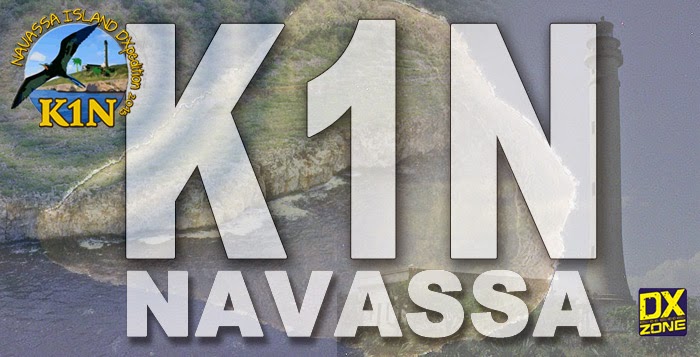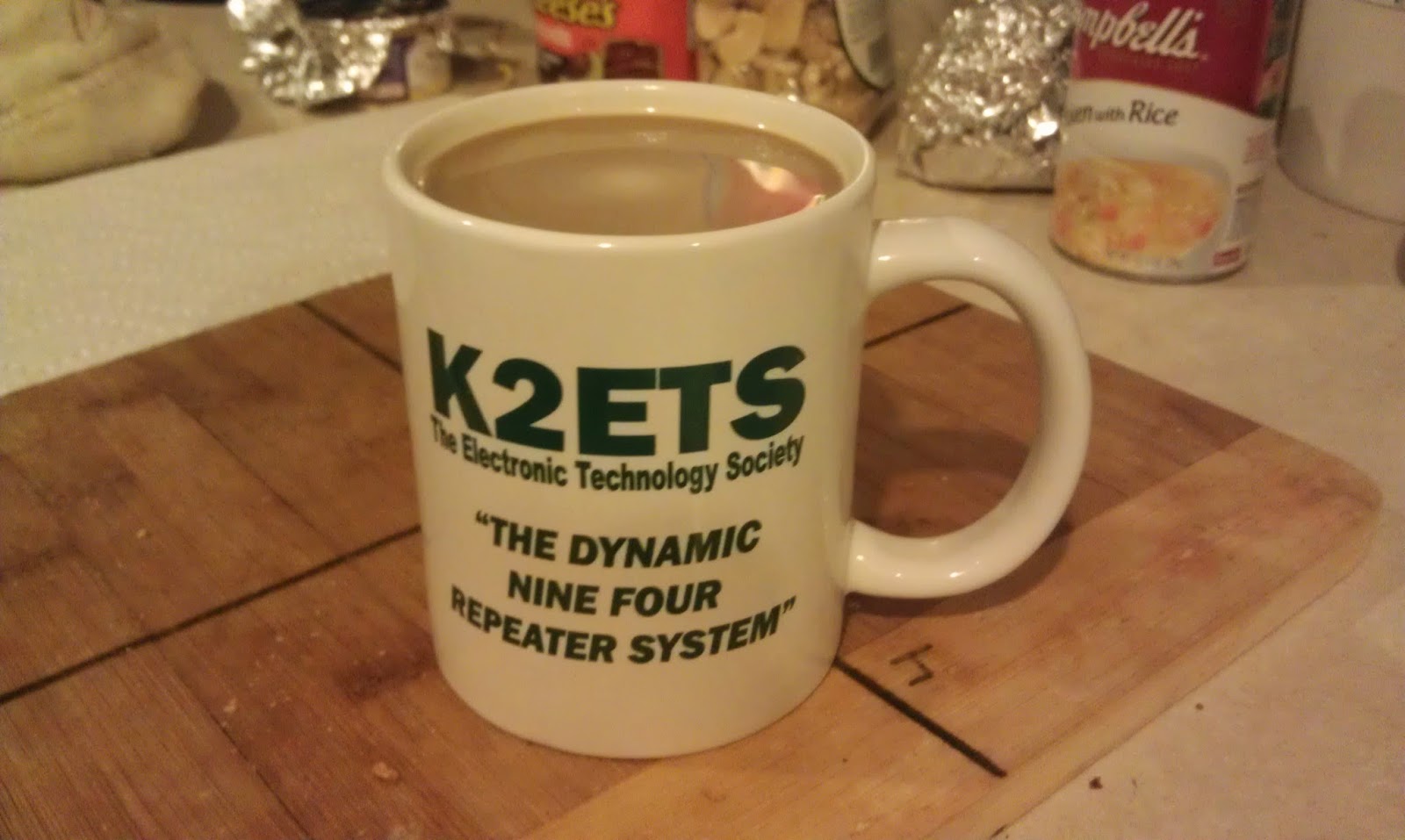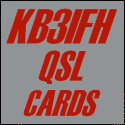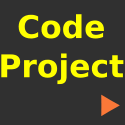Posts Tagged ‘pileups’
 The Art of DX Pileup Busting
The Art of DX Pileup Busting
SOME INFORMAL THOUGHTS ON WORKING CW DX
Recently, I came across some questions another amateur radio operator posed to a group of CW enthusiasts. Since I have an interest in Morse code, I thought I would explore these questions:
— begin quote —
1. When chasing some particular CW DX station needed for my DXCC punch-list, what are some things(s) that one can do to improve one’s chances of snagging that DX contact amidst a congested pileup? Is it truly the luck of the draw or roll of the dice? Or are there some time tested methods, less than obvious, that the experienced CW DX chasers have used that seem to improve one’s chances of snagging the DX contact? Yes, I’m aware that there are many variables to consider. I’m just looking for some general suggestions to improve my odds of success based on the experience of others.
2. If, let’s say, a DX station appends “UP 1” or “QSX 2” to his CQ call or just “UP” appears in a DX cluster spot listing, what is considered an acceptable amount of “UP”? I’m amazed sometimes at the amount of “UP” that I hear. LOL. Does a hefty amount of “UP” actually improve one’s chances? What does the DX op expect?
3. After a DX station sends their callsign how long should one wait to reply with one’s callsign? I hear stations respond immediately. But sometimes I hear others wait just a “bit”, and then respond to DX. And sometimes when the DX station is responding to a chosen station, other callers are STILL calling the DX op. What do most DX operators expect with regard to the response of a reply? Immediate? One-Mississippi …?
4. I hear stations reply to DX with their callsign once. Others sometimes twice. If I send my callsign twice I run the risk that the DX station has already begun his reply back to me with my sig-report while I’m still in the midst of sending my 2nd callsign reply. So … I should send my call just once?
— end quote–
Great questions! And, the answers translate over to working DX pileups on voice, too.
Here are some of my off-the-cuff remarks, based on my limited experience DXing since 1990:
(I am an avid DXer, with 8BDXCC, etc.)
1. Listen, Listen, Listen: The DX station typically does work split – the DX station on, say, 14.023 MHz, and the DX station is listening anywhere from 14.028 to 14.033 (up 5 to 10). You first, of course, need to listen to the DX station, but, also to hear the stations that are calling the DX station! The trick is to be able to hear some of the stations that are piling up on the DX, and to determine if the DX is working a station, then tunes up a little, or down a little, from the frequency on which the last caller was chosen.
Once you know this, you want to position your signal so that the DX operator tunes to or very near where you are transmitting your signal. If the DX station does not call you but continues in the same tuning direction, you reposition your transmit frequency (always in the pileup window) and try again. If you do not know where the DX station is listening next, and especially if you cannot HEAR the DX station, you are calling blind and are in for a long effort.
If you have a way to see the waterfall at and around the DX frequency, you can often see the general spread of “UP” where the callers congregate. When listening (and, let me tell you, listening is key) to the DX station, watch the waterfall for the responding caller (the station in the pile-up calling the DX), as sometimes it is very obvious who is answering the DX. Watch this exchange for a number of new callers – and get a sense of HOW the DX operator is moving through the pile-up. Anticipate where the DX might listen next. Choose that “next frequency in the pattern of movement” and use that as your calling frequency.
2. Timing your call: this takes a bit of effort. I typically listen to my chosen transmit frequency, trying to call never at the exact same time as others, on or near my calling frequency.
3. I always send my callsign TWICE… something like this:
DX: DX1ABC UP
ME: NW7US NW7US
DX: NW7US 5NN
ME: R R NW7US 5NN TU
DX: NW7US TU, DX1ABC UP
There are some fine CW-oriented DXing books, PDFs, and websites that talk about this. For instance:
http://sota-dl.bplaced.net/articles/cw_chasing_tips_for_newcomers.pdf
https://www.cadxa.org/getting-started-in-dxing.html
I hope this personal observation of mine about working a Morse code pileup is helpful in some way.
73 de NW7US
https://NW7US.us
..
 Pile up rant
Pile up rant
The 80 Meter Fox hunting ground takes place on spectrum real estate centering on the QRP Watering Hole of 3.560 MHz. The 80 Meter woods is 10 kHz on each side of that, from 3.550 MHz to 3.570 MHz. One Fox "hides" in the upper half and the other in the lower. You find the Fox calling "CQ FOX", send the required exchange back and forth, and you earn a pelt if successful.
Last night, the two Foxes, Earl N8SS and Dale WC7S decided to do something a bit different. Earl planted himself 1 kHz below 3.560 MHz, while Dale planted himself 1 kHz above the Watering Hole. Both worked split - Earl down and Dale up.
Sounds like good, clean fun, eh? In theory, yes - very good. In practice, good - but not very good. And the difficulty that ensued was not the fault of Earl or Dale. Once again, it was due to the Hounds (AKA, the pile up) not listening.
I caught Earl two minutes into the Hunt at 3.559 MHz. I heard him (key words) call "CQ FOX" and then "DN". That raised my eyebrows a bit, as I wasn't expecting that. But I quickly adjusted VFO B and nabbed him on my third call. At this point, all was peachy keen. Then, going up to the high end of the 80 Acre Woods, I heard Dale's pack of Hounds - not very far away at all. From the location of the Hounds and figuring on a "standard split" of 1 kHz, I figured out that Dale was probably sitting around 3.561 MHz. I tuned over there and indeed, there he was - very weak, around 119 ESP levels.
What made things even more difficult were the Hounds chasing Earl, who weren't listening and were trying to work him by calling "up". And they overwhelmed Dale's weak signal completely. And there lies my complaint. If you can't hear the Fox well enough to determine that he's calling "DN" then what are you doing, calling him at all?
Listen - don't make assumptions!
It got to the point where Dale must have realized something not good was going on, as he moved up a little bit farther. That was nice, but there were other problems to deal with, on that end. I had the KX3 in Dual Watch mode and finally had to turn it off, because some of the shenanigans going on there were pretty bad too. I heard one Hound who blindly sent his call - I kid you not - 10 times in a row without so much as taking a breath! 10 times - really ?!? I think that Dale was able to work two Hounds in the time it took this one guy to send his call that many times. Wow! And obviously, if you are sending your call that many times, then you are not listening - and that's the most important thing you can do in a pile up.
Paul WW2PT is one of the bloggers I list in my blogroll. He has a very good post that contains an interview with the K1N Team, post-Navassa. Go over there and read his post. What you read there will make your eyes wide as saucers. But because this is so important, I am going to take the opportunity re-post the K1N Team's assessment on why many in a pile up are not successful. I wish the Hounds in last night's hunt had read this. The main issues they saw were:
The best advice IS "listen, listen, listen and listen some more". Avoid the temptation to jump in blindly and work shot gun style. In the end, you will work more DX - and Foxes, if you listen. And, by becoming a better operator, you will not only be more successful, you will earn the admiration and esteem of your fellow operators. No one wants to earn the label of "LID".
- Not listening to the DX operator
- LISTEN to and LEARN the rate and rhythm of the operator
- LISTEN to WHERE the operator is listening and his PATTERN of moving his VFO, know where he will listen next!
- Learn to use your radio (split/simplex, etc)
- Do NOT jump to and call on the frequency of the last station worked. The DX station will NOT hear you because the din is total unintelligible chaos. Move UP or DOWN from that frequency, as we on our end were continuously tuning up or down after each Q, so if one jumps onto the last-worked frequency, we will not hear you, even if you were the only one there, as we have tuned off.
- TURN OFF ALL SPEECH PROCESSORS AND COMPRESSION! Do NOT overdrive ALC. There is a night and day difference in listening to NA/AS and EU pileups. The horrible distortion makes it impossible to copy many, if not most EU callsigns. There were MANY loud stations that we did not work, simply because we could NOT understand their terribly distorted callsign. Have you ever listened to yourself in a pileup? We gave many stations a “19” signal report. Very loud, but extremely unintelligible! You want to have INTELLIGIBILITY, not distortion!
- Give your callsign ONCE and ONLY ONCE! DO NOT KEEP CALLING! We would tune on by those who did not stop calling. We are looking for RATE and getting stations into the log. You should be, too!!!
- If the DX station comes back with your callsign, DO NOT REPEAT YOUR CALLSIGN, AS WE ALREADY KNOW IT or we would not have answered you. Many stations (in all modes) would repeat their callsign two, three and even four times! We only want to hear “5NN” or “59” from you. Anything else is a total waste of time and CHEATS others out of a chance to get into the log. Only repeat your callsign if it needs correction, and then let us know it is a correction. Anything else is cheating others out of a contact, as our propagation windows and time on the island are limited and we need to maximize the opportunity for everyone. SPEED.
- Take some time to listen to the next DXpedition working NA and listen to the rate and rhythm of the operator. It is fast, quick and efficient, and more people get into the log! Then listen to him work EU. The wise operator will catch on quickly to what it takes to get into the log!
- SPREAD OUT! Our highest rates (for any continent) were working the edges of the pileup where there was less QRM and weak stations were much easier to work than loud stations in the middle of the pileup. If we say, “Listening 200 – 210,” 70% of the pileup sits exactly on 200 in an unintelligible din, 25% of the pileup sits on 210 and is almost as bad. 5% of the pileup will be spread out somewhere between 201 and 209, making them very quickly put into the log. S P R E A D O U T ! ! ! !
- LOUD is NOT better! MORE AUDIO/COMPRESSION is NOT better! Finding the spot to be HEARD is the MOST important thing you can do to get into the log. My biggest thrill (and I’m sure on both ends) is finding the lone weak station and getting him into the log quickly.
- LISTEN to the DX operator INSTRUCTIONS! As we would constantly tune our VFO, if we find a clear spot, we would often say, “33” (meaning for YOU to transmit on 14033, 28433, etc) and a few would listen and get into the log very quickly. You cannot hear these hints if you keep calling calling calling calling……… Many times I would say, “listening 200-210” and after a while would say, “listening 240-250”. Often 30-45 minutes, even and HOUR later, I would find MANY still calling on the original “200-210”…..of course, they would never show up in our log, as I was not listening there. LISTEN LISTEN LISTEN and LISTEN SOME MORE. The less you transmit, the better chance you have of getting into the log.
- LISTEN
- If you don’t want to get into the DX log, just ignore the above suggestions.
End of rant.
72 de Larry W2LJ
QRP - When you care to send the very least!
 Mission half accomplished
Mission half accomplished
Knowing I was going to be up super early, I decided to leave the shack computer running, after last night's failed attempt on 40 Meters. We must have had a power failure during the night, because when I got down here, the computer was off. So I re-booted and while waiting for the microprocessor to do it's thing, I turned on the KX3. Lo and behold, K1N had not budged from the frequency that they were on when I left them last night.
On a hunch, I decided to activate the KX3's dual watch, sub receiver. This time, after listening for a bit, I was able to determine the split was a manageable "up 5" (not like last night, where the split was something like "up 10-15 and everywhere in between") and I started sending my call. Within 12 minutes at 0912 UTC, I was in the log. As an aside, let me state outright - my fist at 4:00 AM without coffee was NOT a thing of beauty. Not at all - it was almost like I couldn't get my hand to work right. I was actually staring at it for a few moments wondering "What's going on here? You know how to do this!"
After a few seconds of happy dancing, the shock wore off. "What do I do now? Go back to bed?" I really hadn't expected to be successful so soon. Better judgement was telling me to go back and get a few more Z's before beginning the work day, but Ham judgement took over. "No, since I'm up this early, let's try 80 Meters." You'd do the same thing, right?
K1N's signal was a tad weaker on 80 Meters as compared to 40 meters, but I decided to give it a go, anyway. After listening with the KX3's sub receiver, I was able to determine that again, the split was manageable, and not all over creation. Even better, the K1N op's movements were steady and predictable. At 0938 UTC, I was in the log on 80 Meters! Holy cow! Two bands, within a half an hour of each other! The rest of my day is either going to go extremely well, or it's all downhill from here. The KX3, KXPA100 and my W3EDP did their job for me - thanks Elecraft, and mucho thanks to the K1N ops for digging me out of the pileup.
And yes, as per this blog post title, the mission is only half accomplished. With the remaining time that they are there on Navassa, W2LJ will make another attempt, on another band, to get into their log once again - this time with QRP power. Since K1N probably won't be activated for another 25 years or so, the first goal was just to get them in the log with my new DX Rule - WFWQL (Work First Worry About QRP Later). With that monkey off my back, I can relax somewhat and now try to beat the pileups with 5 Watts.
Hopefully, that will be another interesting story that I will be able to write about.
72 de Larry W2LJ
QRP - When you care to send the very least!
 A double edge sword
A double edge sword
Until, possibly, now.
K1N should be starting up very soon. Navassa Island is nestled comfortably in territory that I have always reliably communicated with. But this little spit of land is so high on the DX wish list, that it rivals North Korea on some DX'ers most wanted list.
I expect nothing less than pandemonium in the near future. Expect mile wide pileups on the HF bands as everybody and their uncle try to work this DXpedition. So, while 5 Watts has never failed me up to now, I haven't decided my approach to K1N, yet. If I decide to jump into the fray very early, it will be with 100 Watts. However, I may also wait for the second half of the expedition, when a 5 Watt attempt may be more doable.
UPDATE: K1N is on the air! I am listening to them on 40 Meters on 7.023 MHz, Currently the pileup is going past 7.035 MHz. I think there might be an issue for the 40 Meter QRP Fox hunt Tuesday night.
72 de Larry W2LJ
QRP - When you care to send the very least!
 Some common sense, please!
Some common sense, please!
Take for instance last night. I was trying to work Steve WX2S on 40 Meters who lives about 18 miles from me. Ground wave was strong enough that he was about a 229/339. The advantage was that not only could I hear him, but I could also hear the stations that were calling him. I ended up not working him, but even so, it was a unique opportunity to observe.
Steve was working split from the beginning and he was handling the pile up deftly. But I was left shaking my head, because so many times - all through the hunt, people continued throwing out their calls while Steve was engaging another station! I sat there, kind of dumbfounded. There was Steve, sending out "559 NJ STEVE 5W" to whomever, and all the while there were stations sending out their calls, over and over and over, without so much as taking a breath!
So here's the deal......if you can't hear the quarry well enough to realize he answered someone other than yourself - then why the heck do you continue to throw your call sign out there in the first place? Obviously, if by some miracle, he actually came back to you - would you be able to hear that well enough to realize it and complete the exchange? Something tells me ........no.
Part of pile up discipline (on the part of the chasers) is to realize when you have a legitimate shot. But in any case, whether the quarry is 229 or 599 on your end, don't you think it would be a lot wiser to send your call maybe twice at most and then take a break to actually listen?
Listening. That seems to be a dirty word in the minds of a lot of folks.
Look, I know we all make mistakes and I've made my fair share, too. No one is perfect, and I can understand forgetting to turn the "split" function on or some other such thing. But deliberately sending your call over and over and over in the vain hope of somehow scatter-gunning the target is really just inexcusable, and rude and inconsiderate of your fellow Hams.
As always, this is just my humble opinion. Your mileage may vary.
72 de Larry W2LJ
QRP - When you care to send the very least!
 HV0A
HV0A
Holy pileup, Batman!
There was a H U G E pileup just above 18.077 MHz. Some listening revealed that it was indeed a "holy pileup" as the quarry of the hunt was HV0A - Vatican City. And he was loud - very loud! In 36 years of Ham Radio, this was about the second or third time that I have ever heard the Vatican on the air. I have never worked them before.
But today, with them being that loud (599+), I felt I stood a chance. In case you're wondering, wonder no more. My QRP sensibilities took a backseat and I pumped up the KXPA100 to its full 100 Watt setting. How many times have I heard the Vatican? Again, only once or twice before - it's rare for them to be on the air, for me to be home at the same time, and for propagation to be so favorable. I wasn't about to let some false sense of QRP Pride get in the way of getting a rare and new country in the log.
The operator was smooth and was handling the pileup quickly and efficiently. Operating split, he was running a standard racetrack pattern. He was listening slightly higher up after each QSO until he reached a certain frequency and then began listening down unilt he reached a frequency about 1 kHz above where he was transmitting. The he began listening up again, starting the whole cycle over again. Almost exacty like trying to work any of the ARRL Centennial stations - once I figured out his pattern and approximately how much higher he moved after each QSO, I made my plan to "get in his way". After about 6 or 7 attempts, I got in the log. If I ever hear the Vatican this loud again, then next time will be a QRP attempt, this time I'm just fat, dumb and happy.
According to the CW Ops e-mail reflector, the operator was Robert S53R, CW Op #492. Whomever, he was, he was good!
This is one QSL card that will be framed and hung on the shack wall, once I receive it.
Still stoked!
72 de Larry W2LJ
QRP - When you care to send the very least!
















